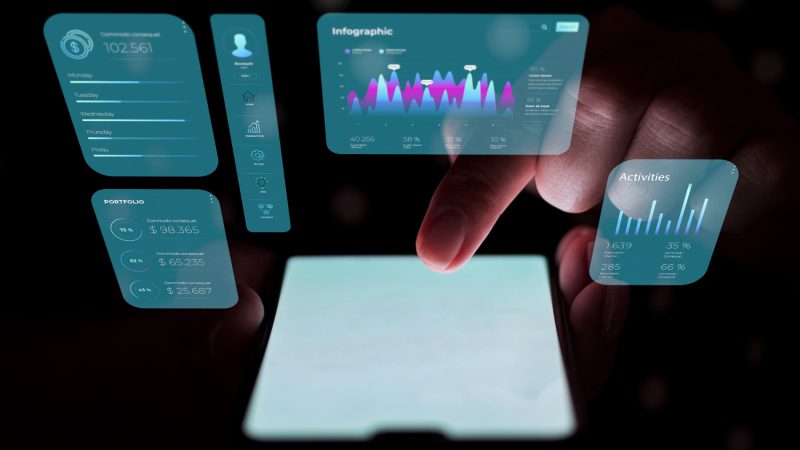What Is Demand Generation? 6 Essential Steps to Build a Demand Generation Strategy

Demand generation is a unique marketing tactic that aims to generate credible brand awareness and attention to deliver strong leads.
Demand generation can raise the credibility and persuasiveness of a company’s marketing communications in the eyes of potential customers. This can eventually boost sales by cultivating quality leads.
What distinguishes lead generation from demand generation is the objectives of these two techniques.
A lead generation strategy concentrates on converting an established connection into leads through direct outreach. Whereas demand generation aims to increase brand reputation and credibility, so potential buyers may reliably enter the buying track.
Let’s look at the necessary steps to developing a productive B2B demand generation plan.
Developing a Productive B2B Demand Generation Plan: Steps
- Build Awareness
In the cutthroat sales and marketing environment of today, brand recognition is essential for a steady stream of high-quality leads. Even though it can appear simple, increasing brand recognition involves more than just attracting the interest of potential customers.
A genuine and enduring brand awareness approach presents prospective customers with a lasting, positive opinion of a business, increasing their likelihood to trust that business when it provides answers to the customer’s problems or requirements.
What is a guaranteed strategy to get more exposure and reputation with customers? Customer testimonials. Particularly: current, reliable reviews.
Reviews provide a succinct description of the product from the perspective of peers and aid customers in focusing. Genuine customer evaluations should be given priority by businesses.
Individual reviews serve as frank, unvarnished consumer feedback about actual use that is free of marketing spin. Customer evaluations as a whole offer deep insights that enable customers to rapidly go through the enormous selection of items offered.
- Consider Content Strategies
Building industry knowledge goes hand in hand with brand recognition as a crucial component of effective demand generation. With industry knowledge, a potential buyer will immediately see your brand as a thought leader in the industry.
This level of knowledge establishes client trust and prepares the foundation for crucial discussions. The problems your clients are experiencing and the remedies your company can provide are offered with content. The greatest method to develop expertise is with a sound content marketing strategy. Your content should provide relevant, useful insights at each stage of the purchasing process.
Building purchase trust and brand awareness is accomplished by offering information addressing the queries and concerns of customers. These clients will recall your brand as an industry leader and turn to your company as experts in the field for future requirements.
If you don’t have the resources to manage everything yet, you can employ demand generation for that. They’re experienced in developing content, sales management, and lead nurturing strategies.
Create curated or customized content to meet the demands of a certain type of high-value lead if you have the resources to achieve that. This might relate to leads that are most likely to become customers or prospects. In simple word, those who are most willing to spend money working with your business. Develop content and call-to-actions that help customers through their buying process and predict issues and concerns shared by your group of valuable leads.
- Nurture High-Quality Leads
A comprehensive lead nurturing approach from initial contact to selection and sale is necessary for healthy, dependable demand creation.
Throughout the purchasing process, marketing teams should collaborate with sales, being aware of the attitudes, queries, and concerns of the customer. Depending on the strength of their assets, marketing teams should stay in touch with all these strong leads until they make a purchase by offering relevant content that addresses typical queries.
Your campaign team should concentrate on the kinds of content that are required by potential customers and the best platforms to distribute them. Targeting clients with the appropriate material or assets at the precise time when they will benefit from it most is the aim of this type of targeted nurturing campaign.
We advise keeping a careful eye on lead feedback to see whether your outreach tactics are fulfilling client demands. Review lead nurturing track performance regularly and notice the phases that have higher engagement or more importantly—higher unsubscribe rates. As often as required, modify your lead nurturing tracks and messages to achieve the best outcomes.
- Create an Ideal Buyer Persona
A buyer persona is a fictitious figure that stands in for the ideal target market for your business. You’ll make one by gathering and examining the data you already have from your present customers to look for patterns. You may use:
- Age
- Income
- Age Career
- Gender
- Relationship status
- Location
Use this data to determine who your typical customer is. For instance, if your business sells headphones, you may discover that your typical consumer is a California-based woman in her 24s who is employed, earning $48,000 per year. Although this example isn’t applicable for B2B campaigns, you get the idea.
Utilizing customer relationship management (CRM) tools like HubSpot, send emails to clients who most closely match your typical client and schedule interviews with them.
- Utilize Public Relations
Using public relations to expand your business’s reach is an affordable yet effective way. The narrative of your brand is key to good PR. It entails telling your target audience a message about your brand. Media, social media, and live webinars may all be used to enhance the perception of your company.
Participate in well-known blogs, websites, and podcasts in your field. These might increase your audience reach and assist in establishing your trust. You may look up well-known blogs and web pages in your profession on Google or by searching for podcasts.
- Utilize Paid Ads
Pay-per-click (PPC) advertising enables you to purchase web traffic. Search engine advertising is a popular type of PPC marketing. Businesses may place bids to have their advertisements appear as sponsored ads anytime a certain term is searched. The business pays the search engine every time a user clicks on the link, or they make a purchase.
For instance, if you own a human resources SaaS business, you may place a bid with Google to show your ad “cheap HR solutions”. You would pay Google, let’s say $5, each time someone searches for “HR solutions or anything like” and hits your link. In return, you get to make much more than that for every purchase.
The Bottom Line
Hopefully, you’ve understood the steps to build a demand generation strategy from scratch. Follow these steps to build brand awareness and credibility for better demand and lead generation.
Although building awareness should be the priority, don’t forget to consider content strategies and lead nurturing. If you can create an ideal buyer persona and utilize PR strategies, you’ll be able to increase revenue in no time.
Name: Daniel Martin
Bio: Dan has hands-on experience in digital marketing since 2007. He has been building teams and coaching others to foster innovation and solve real-time problems. Dan also enjoys photography and traveling.






